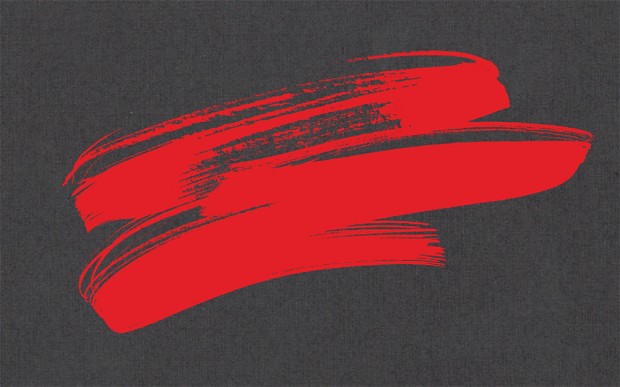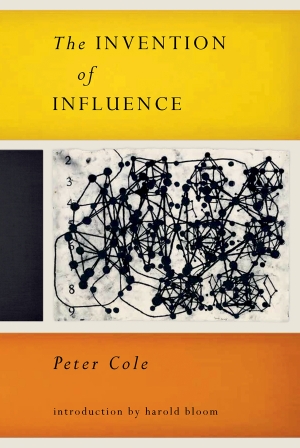
Austin Duck
In Read This or Kill Yourself we get tough with you about your bookshelf and what had damn well better be on it.
Where you headed /
bit further along the road /
whyyou running / oh I often do
/ are youmeeting someone / yes
/ who / a stranger / how
willyou recognize each other /
in a strange way / strangeto both of you / that
would have been a
problem / it’s no longer a
problem / no
(p. 119)
To call Anne Carson’s work, in general, very difficult would probably be an understatement. I mean, it’s not inaccessible nor is it written in cryptograms (though, for a very interesting interpretation of conceptual, cryptographic poetry, check this out), but it’s definitely the kind of work that, if you found yourself on an overseas flight—or stuck on a very long journey—and all you had was Red Doc>, you might be a little upset. But you shouldn’t be.
Red Doc> is a kind of follow-up to Carson’s 1998 title Autobiography of Red, a myth-in-novel-in-verse (thing) retelling Herakles’ tenth labor, to kill Geryon, from a different perspective, instead exploring Geryon’s coming of age, coming to terms with his homosexual love for his pal Herakles, and his artistry as a photographer. What may be most vital to understanding about Autobiography of Red, for my purposes anyway, is that it makes sense. It’s clearly more committed to behaving like a novel-in-verse, a transmission of plot with moments of elevation. It’s coming of age, at times moving, and well reviewed by The New York Times Book Review. Red Doc>, on the other hand, is not. In fact, why don’t you take a minute to peruse other reviews of this book. Seriously. I’ll wait.
Whether you chose to or not, what you’ll find is that, largely, no one knows what to do with it. Daisy Fried of The New York Times praises Carson, recommends you read it, and goes on to call it a failed novel but that it “succeeds at linguistic confrontation” (whatever that means) while The Guardian goes a bit further, kind of paraphrasing the plot (because yes, there is a kind of plot) before ruminating over the title itself. Both agree that the heart of the work (because both reviewers believe poetry has such a thing) lies in Geryon (here G)’s final conversations with his mother at the end.
For the time being, though, I’d like to avoid talking about the ending, the place where we see a somewhat traditional rumination on time, mortality, mothers and sons, etc. because there are approximately 150 pages that deal with all sorts of other, in my mind more vital (and certainly more useful), thoughts, ideas, and tropes. Buckle up; this will be as silly as it is pretentious.
Let me get the kind-of plot out of the way. The book opens on G, middle-aged, having trouble coping with age, the loss of his looks, his friends, while still (sort of) tending a herd of musk oxen. He meets back up with Herakles, here Sad But Great (Sad for short) who’s deeply troubled with post-war PTSD, and they go on a kind of picaresque road-trip with the artist Ida to a glacial lake (which features a glacial rift leading toward a cavern filled with “ice bats” who live in—I kid you not—Batcatraz), and then to an autoshop / clinic, presumably for people with mental health issues. There are volcanic eruptions and riots and eventually G returns to his mother.
The plot, though, comes across as kind of meaningless. And maybe it is. Even Carson, talking through one of the characters in the book (I tried hard to find it; I really did), claims that plot is a house and poetry is the man on fire running through it. So why have it at all? Why waste time jerking us around, forcing us to re-orient ourselves again and again in different, less and less comprehensible situations, obscuring real understanding of G or Sad of Ida or 4NO, each characters who—whether haunted by the past or the rapidly coming future (4NO is a prophet of five seconds into the future)—are unable to access the present moment. Why not just write a book of poems thematically structured so that we may comfortably interrogate the man on fire?
I think that, for two reasons, the answer lies in the poem/section I provided in the epigraph. First (and probably most obvious) is that this book isn’t an interrogation of a single character; it works as dialectic (a conversation between at least two parties). Many of the poems are structured as conversations, and, section to section, character to character, what we are left with is this. Try as we might, there is no patterned similarity or concern linking these various players. They’re just, fundamentally, different. But wait Austin, I’m sure you’re thinking (because I’m thinking it too), what about the fact that none of the mains can access the present moment? That each is driven, in some way or another, by some subconscious concern, be it the past or the future? Isn’t that a pattern?
Yes. Yes it is. Sort of. However, to simply link these characters together—one obsessed with his aging body, his sexuality, his herd, another whose mind is ravaged by way, another who’s only access to the present is only seeing five seconds into the future—under such an abstract pattern is incredibly reductive. It seems that, were we being asked to drop the specifics of each concern, to generalize and lump together each character to fit our idea of coherence, what’s lost is profoundly strange and profoundly real. Yes, I do think that the pattern of similarity is important—it is, after all, what makes us culturally (maybe even ontologically) recognizable to one another, empathizable with one another—but I think that, with the jumps in plot considered against the organization of the book (which poems/sections come after each other), we’ll see a kind of freedom, an intentional strangeness that’s pointing toward itself.
Which brings me to the second reason I chose the epigraph that I did: the lines “how will you recognize each other / in a strange way.” What we’re being pointed toward, even with the goddamned > in the book’s title, is not simply Anne Carson’s I’m a super badass hijinks. Instead, it’s a statement of strange recognition, a new kind of identification that occurs beyond what we, as a culture of people, are conscious of. I’d bet dollars to donuts (because I love donuts) that the majority of you look at the title and think that looks like a file I’d save on my computer, and it is! That’s the whole story of how Carson titled the book. But beyond that, it’s a piece of information that communicates similarity and similar understandings to us despite the fact that, linguistically/grammatically/philosophically, it is meaningless and just plain strange. The surrealist picaresque plot of the book, then, the organization, the characters’ relationships with one another, the fact that this is sort of a novel, doesn’t exist to create what most of us would classically think of as coherence. After all, we all know what a novel does: It uses plot to move a theme toward resolution with characters either furthering or impeding that progress. And a poem: It’s a pattern of language that makes the incoherent cohere. Here, we have those things, but also we don’t. As much as there seems to be a plot, seems to be patterns coalescing toward an identifiable meaning, there isn’t. What we come to instead is a profound strangeness and a profound identification alike (with characters and poems and forms and genres), an experience of the unheimlich, the uncanny, a thing both twisted and recognizable, home and not. We see the human, the mythic, the literary, the poetic, the cultural, and, at the same time, we see none of it, just strangeness, some unidentifiable piece of work existing completely on its own and in a vacuum.
When I made the statement in the title that Red Doc> exists on the edge of sense, I meant that sincerely and even as a kind of celebration. This is not a conceptual poetry that can’t be read, but, at the same time, it certainly isn’t the kind of poetry or novel that you’re likely used to reading. It’s an artwork of the mind and its reality, of the dissimilarity that each of us knows to be true about ourselves and, ultimately, what it means to connect with another, to be alongside them in life, on a journey, in time when this is the case. To never escape our shit while moving forward through time. To be with another and to know nothing of them, to see their cruelty and damage and violence and insanity and their capacity to care, to feel, to empathize and identify. To “be / suspended in the lives of/ others and still not.” This is a book about being.
Austin Duck lives and blogs in DC. He can be reached at jaustinduck@gmail.com.
Image source: Telegraph
